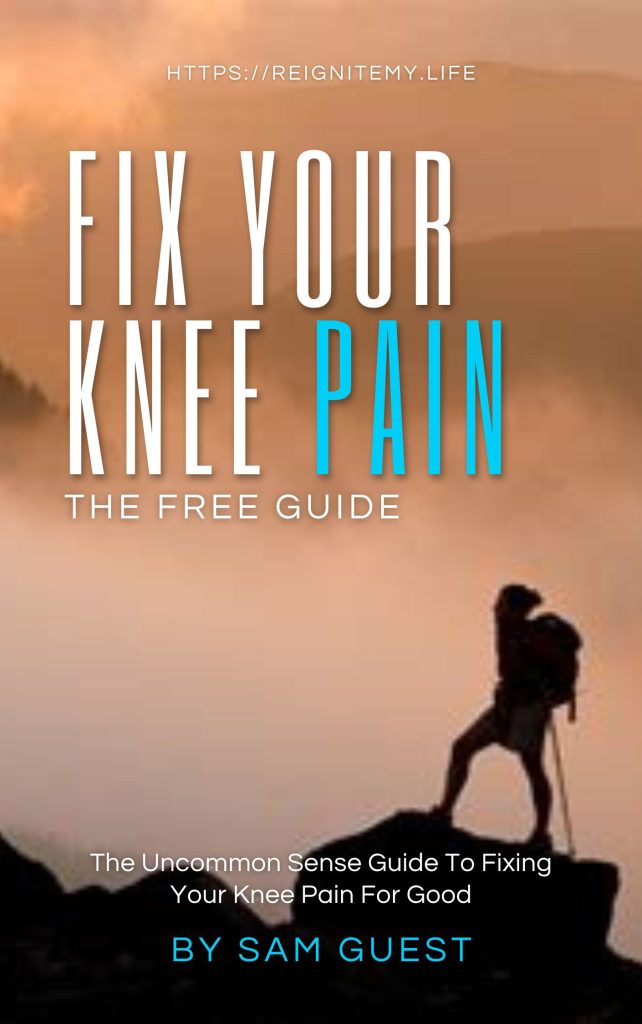Summary
- There is a HUGE difference between movement and exercise
- We cannot do too much movement, we can very easily do too much exercise
- By incorporating more movement in our lives we activate a lot of the bodies natural longevity protections
- By adding in some short, sharp more intense “workouts” during the day we can improve our bodies without spending hours at the gym
The idea of farmer fitness for me started with a chap called Derek who came on a kitesurfing holiday with us. He was 65 and came with his much younger kids and their friends all of whom were in the age of 16 – 25.

It was a really windy week and we’d been down the beach for 5 days straight for 6 – 8 hours a day. On day 6 after 2 hours all the young ones were smoked, lying on the beach and sleeping. Our instructors were in a similar state begging me to go home.
Derek was smiling and when I asked him how he was feeling and if he’d like to stop he looked at me as if I’d gone mad.
“I’m just getting started, I could carry on all day.”
And I believed him.
I sent all our instructors home with the young ones and stayed with Derek and started quizzing him. How was it that this 65 year old man had destroyed all my instructors (all of whom were in great shape) and his much younger companions?

He was quite specific and told me…
“I’ve never been inside a gym in my life.”
But he understood what I was driving at as he spilled the beans.
Turns out he was a pig farmer and had been for his entire life. He gets up every morning at the crack of dawn and starts to move, to walk around the fields. As he’s doing this he will every so often have to lift a pig or mend a wall, shift hay around or something similar.
In short, he moves a LOT every day and intersperses this with lifting heavy stuff.
This discovery set alarm bells ringing in my head. I’d read a similar story about Geoff Capes who had spent his early life flinging sacks of potatoes around.
When looking deeper into the science of this it actually makes a hell of a lot of sense.
Movement (much more so than exercise) is exactly what the body is designed to do. As we move the circulatory and lymphatic system activate, inflammation markers switch off and the body simply functions much better when it is moving.
By mixing this up with short but consistent periods of heavier exercise we are reminding the body it needs to be strong and ensuring we stay strong.
Over time I’ve come to realise that the crucial part of this is the distinction between Movement and Exercise.
When we train most of us actually cross over into exercise far too much which renders a lot of our training much less efficient due to the increased recovery times.
Ethiopian runners have dominated the world scene for a long time and a lot of research has been done on how they develop such an unnatural advantage. At first it was simply thought to be genetics.
However deeper study revealed something interesting.
The Anaerobic Threshold
Your anaerobic threshold is a posh way of saying the level above which you cannot maintain your intake of oxygen, which results in lactic acid accumulating which makes it difficult to maintain the level of intensity you are currently working at.
Basically put if you were exercising for 3 hours you couldn’t manage it working above your anaerobic threshold.
Below your anaerobic threshold you can continue to work at the same intensity for a much longer time. This is the level we are at when walking, light cycling, light swimming etc.
Simply put if you’re exercising and can maintain a conversation you’re below your anaerobic threshold. If you can’t you’re above it.
The 80/20 Polarised Training Concept
In any general exercise program aimed at longevity of performance, to ensure you train intelligently and get the quickest results you want to aim to:
- Spend 80% of your time working below your anabolic threshold to train movement mechanisms, consistency and volume.
- Spend 20% of you time working fast and above your anaerobic threshold to train intensity.
Time and time again this has proven to be the most effective way of building fitness and efficiency (which are really part of the same thing) fast.
The Ethiopian runners followed the 80/20 principle of exercise exactly, however during their 80% of low level exercise they exercised at a MUCH lower level of intensity than most other athletes. In fact so low that many of us wouldn’t really count it as exercise…more like movement. Everything else they did the same as every other long distance runner in the world.
It was just this crucial distinction between Movement and Exercise which made all the difference.
BUILDING FARMER FITNESS
So we want to replicate Derek and the Ethiopians to build our foundation level of Farmer Fitness.
How do we do that? Move lots and intersperse this movement with short periods of waking the body up with more intense periods of exercise.
What does this look like in real life for most of us?
Simple, walk, very light bike ride, slow swim, yoga or as many of these or similar activities as you possibly can (basically to class as movement it should be a level of activity you feel you could keep up all day…within reason), and then every hour or at a minimum every 2 hours do 20 seconds to 2 mins of press up, squats, burpees, pull ups or similar body weight exercises to keep the body ticking over.

Ok so I know that some of you are saying but I work in an office how am I supposed to do that?
It’s actually surprisingly simple and the real beauty of this approach is it requires only small lifestyle changes.
Get of the bus or park the car a little further away and walk as as far you can to work, cycle to work (be sure to cycle at a slowish pace) get a standing desk at work, get up as often as you can at work and take a spin around the office (this actually works wonders for your creativity and productivity as well). And then on the weekends strap on a backpack and hit the hills for a few hours.
If you’re a bit creative most people can think of a way of introducing more movement into their day.
Then all you do is set an alarm preferably every hour but absolutely no less than every 2 hours at which you sneak off to the toilet or a quiet space…or hell just do it right there in the middle of the office (I have some clients who’ve got their entire office doing this!) and knock out 20 seconds to 2 mins of press ups, squats, burpees etc.
The key here is again to start slowly. You want to be able to do this every hour of every day. You shouldn’t ache so much after doing this that you can’t do it again the next day. If you do dial it back a bit until you don’t ache.
Once you’ve reached this level I would suggest you dial it up until you reach at least 1 min of exercise every hour and as much movement as you can realistically manage.
At that point you can consider your program of Farmer Fitness in place and it’s just a case of doing it EVERY day.

